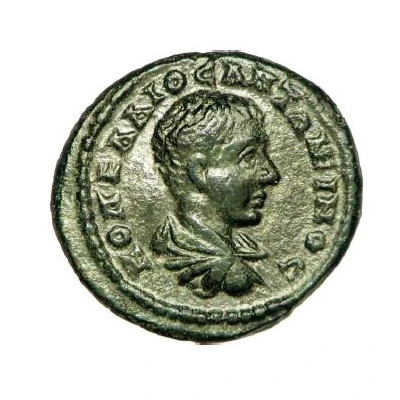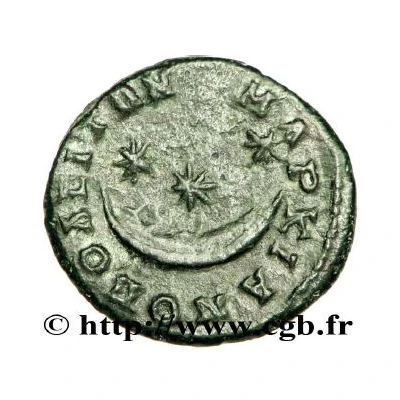


© CGB
Assarion - Diadumenianus MAΡKIANOΠOΛEITΩN; three stars; Markianopolis
| Copper | 4.17 g | 18.50 mm |
| Issuer | Marcianopolis (Moesia Inferior) |
|---|---|
| Emperor | Diadumenian (Marcus Opellius Antoninus Diadumenianus) (217-218) |
| Type | Standard circulation coin |
| Years | 217-218 |
| Value | Assarion (0.1) |
| Currency | Drachm |
| Composition | Copper |
| Weight | 4.17 g |
| Diameter | 18.50 mm |
| Thickness | 2.80 mm |
| Shape | Round (irregular) |
| Technique | Hammered |
| Demonetized | Yes |
| Updated | 2024-10-06 |
| Numista | N#196108 |
|---|---|
| Rarity index | 94% |
Reverse
Crescent surmounted by three eight-pointed stars.
Script: Greek
Lettering: MAΡKIANOΠOΛEITΩN
Translation: "Marcianopolis"
Edge
Rough
Comment
DIADUMENIAN (04/217-8/06/218) Marcus Opellius Antoninus DiadumenianusCaesar (04/217-05/218)
Interesting fact
One interesting fact about this coin is that it features a rare combination of symbols and letters that provide insight into the political and cultural context of the Roman Empire during the 3rd century AD. The coin's obverse side features the image of Emperor Macrinus, while the reverse side bears the image of Diadumenianus, Macrinus' son and co-emperor. The coin's inscription, "MAΡKIANOΠOΛEITΩN," refers to the city of Marcianopolis, where the coin was minted. The three stars on the coin's reverse side are believed to represent the three main gods of the Roman pantheon: Jupiter, Mars, and Minerva. The coin's copper material and 4.17g weight are also notable, as they were standard for Roman coins of this era. Overall, this coin offers a unique glimpse into the political, cultural, and economic landscape of the Roman Empire during a tumultuous period in its history.